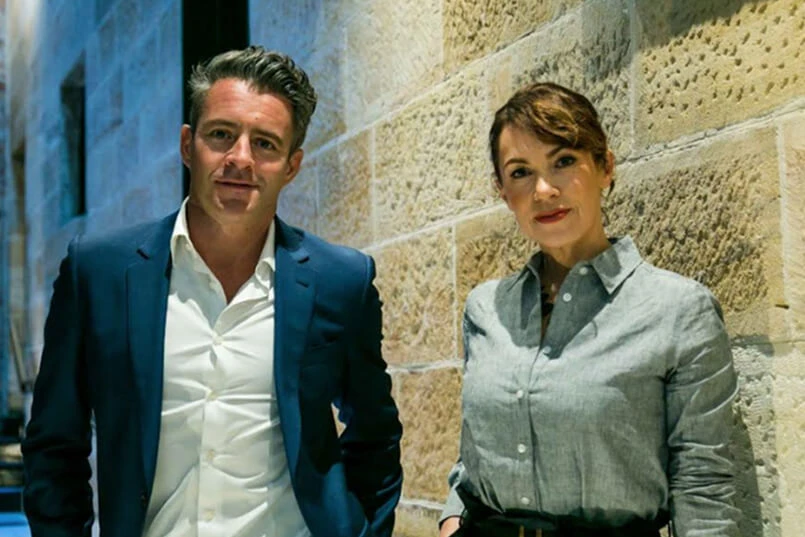The perception of media agencies as lacking in transparency, and therefore trustworthiness, has long been a challenge. The events of the last twelve months, centred around the well-publicised issues at Mediacom, have sparked huge debate on the topic of agency transparency in the Australian market and beyond. In this session we discuss ways in which trust barriers could be overcome, and what you as a marketer need to consider in order to build a better relationship with your media agency.
This is the transcript from the TrinityP3 webinar presented by David Angell, TrinityP3 Media Lead and General Manager Melbourne.
To get to a space where I’m talking to you about how to generate improvement via the creation of trust and transparency in your agency relationship, we must first confront two areas.
- The general perception of media agencies in the market.
- The more nuanced reality that exists behind the headlines.
By confronting these areas we can get to what the challenges are, and therefore what approaches, behaviours and actions are required in order to improve.
The framework that defines those approaches, behaviours and actions is The 4 C’s: Consultative, Compliant, Commercial and Collaborative.
Current Crisis
I’d like to start by framing this session in the right context.
The recent media furore around… well, around media agencies… has driven us all, as commentators, to a space we seem to love – the crisis space. It’s human nature. We love it when things get dramatic. That’s why over the last 12 months, from the nucleus of a relatively junior group of individuals fudging – accidentally or not – some numbers on a TV post analysis document, there has developed a huge mushroom cloud of headlines, reports, pitches and renewed speculation surrounding ‘media agency transparency’.
I’ve been in or around media agencies for fifteen years, both here and in the UK. And for reasons I’ve never fully understood, media agencies always seem to be relatively highly disliked within the industry. There’s a pernicious, insidious lack of respect for what media agencies do, or claim to do.
There’s a dichotomy between the importance of a media agency’s primary role – handling millions of dollars in client funds – and the lack of respect for the people actually doing the job. The view remains in some quarters that the default setting of all media agencies is to smoothly rip off their clients. They truly are the estate agents of the marketing services industry, the ones we love to hate.
Don’t get me wrong. There is definitely a lot wrong with media agencies. But there’s a lot that’s good as well, and its fair to say that this dynamic is the same for pretty much every business category on the planet.
I’ve said it before and I’ll say it again; the majority of individuals I’ve worked with in media agencies have a genuine desire to do well for their clients, and to do good business for their employers. Harness these organisations in the right way, and you can establish great, trusted relationships. I know this, because I’ve been there.
The aim of this webinar today is not to rake over the coals of AVBs, backhanders and number-fudging. The aim of today is to suggest some ways in which the best that exists in great media agencies can be instigated, developed and harnessed by you as clients, for your own benefit as well as that of the agency itself. I’m going to talk about what you should want in a media agency, and how you can get it.
Evolution and Challenges
But first, some perspective.
There’s no doubt that media agencies have had to evolve – like most things, of course, but I’d argue that the scope of that change has been relatively extreme, and continues to accelerate. From Mad Men’s Harry Crane talking about buying spots in the sixties, to the hard-edged buyer of the eighties and early nineties, media agencies are now positioning themselves as precision strategists, programmatic traders and producers of content, data analytics tools amongst other things.
There is a constant push to diversify as a mix of globalisation, commoditisation, competition, diversification and automation and have profoundly impacted the way in which agencies operate.
We all know how much the media landscape is fragmenting, how much marketing as a discipline is changing. The biggest challenge faced by the agencies, in my opinion, is to truly satisfy the now, the next and the later at the same time; again, they aren’t unique in this challenge, but it is particularly pronounced in this area due to the amount of chatter about the ‘next big thing’ that is such a central feature of our industry.
The reality is that media agencies, no matter how digitised or strategic they proclaim themselves to be, are still buying a lot of television spots. Their bread and butter remains in paid media trading. Therefore, agencies need to retain their staff in traditional roles, and at the same time re-train them in new disciplines, invest ahead of the curve by attracting new skillsets from outside the industry and develop new product suites, whilst all the time maintaining cost compliance and profitability. It should come as no surprise that staff churn in media agencies is a big problem in this market.
Challenges lead to relationship strain
In the middle of all this turmoil is the often unwilling client – you, the marketers. Relationships inevitably suffer. Media agency service models are now so complex that it’s sometimes difficult to see the wood for the trees, and it can feel like the agency is prioritising shiny new capabilities over getting the basics right – and the basics is what accounts for most of your budget. This is particularly acute when the agency is on a mission to sell-in new revenue streams. Having said this, marketers often don’t give enough time, respect or empathy to the agency trying to educate them in something that might just be useful.
The empathy on both sides for this process of enlightenment can be really poor. Exacerbating this, when agencies are actually given the opportunity to communicate, they often do a terrible job, further adding to the sense of opaque ‘dark art’ which extends into structure, process, technology and ultimately remuneration. Contractual agreements are often years out of date, with no-one on the client side with the skillset to unpick some of the less transparent or faster-shifting details that would allow a move away from unspecified revenue streams and derivative performance measures that create a barrier to change or agnostic channel planning.
As the areas between media agencies and other disciplines continue to blur, there can be intense irritation caused by multiple competing agencies, all with their own ideas on strategy and implementation of your campaign. All of this ultimately leads to a lingering sense of over-promise, under delivery – my view is that right now, ‘over-promise and under-delivery’ of the media agency is more commonly felt amongst marketers now than ever before, which of course contributes to an ultimately vicious cycle.
What you want and what you get
Well, getting the best out of your media agency and striving to reduce some of these challenges is – of course – a two way street. Media agencies are filled with smart people who are often as frustrated as you are at what they perceive as the barriers put in their way by their clients, barriers that prevent great relationships and actual change from happening.
Of course there are great relationships that do exist right now. Of course its not all bad. But if your media agency relationship is struggling, for any reason, it’s worth spending some time considering these two things:
Regardless of what you’re marketing or what your strategy is: if you’re paying a media agency, what SHOULD you want?
Mis-managed relationships can often cloud true potential of a media agency. I believe that there is improvement waiting to be unlocked in almost every media agency relationship. So when you’ve worked out what you should want; consider what (short of simply pitching the business) can you do to get it?
Creating trust and transparency
At the end of the day there are a thousand ways to describe what you should want out of a great media agency, but ultimately it boils down to what I’m calling the 4 C’s to improving Trust and Transparency.
Consultative. You want an agency of thought leaders, educators, confidants and sounding boards; of people who have the right balance of focus between the reality of now and the possibility of the future.
Compliant. You want an agency with clear structure, clarity and flexibility in its dealings with you; an agency willing to stand up and be counted against its own performance and its contribution to yours. More than this, you want an agency prepared to be a part of driving best practice in the industry to which it belongs.
Commercial. You want an agency that can handle itself; that trades with the right balance of confidence, assertive power and knowledge. You want an agency who can get the job done when the rubber hits the road. You want an agency who is not the cheapest, but the best you can buy into, and who buys into you.
Collaborative. You want an agency adaptable enough to thread itself through your organisation across all touchpoints, and that of your other agency suppliers with the appropriate amount of grace, care and conviction.
The 4 C’s
Putting our 4 c’s on a quadrant allows us to map the relevant agency capabilities.
Consultative Compliant Quadrant
In the Consultative-Compliant Quadrant sits Flexibility in Remuneration, Willing Educators and KPI Commitment.
Flexibility in Remuneration
If agencies are really trying to adapt themselves in terms of service, they need to adapt their payment structures. For all but the most hidebound, commission-based remuneration is simply no longer appropriate. You should want an agency that is open and willing to work with you in discussing performance-based incentive structures that will help to establish a business partner mentality.
Willing Educators
There’s so much that agencies can ‘educate’ you on. You want an agency that can educate you in your own language, that has an instinctive understanding of the level of detail required, and is able to bring different teams within its own structure together so that you can properly understand the way things actually work.
KPI Commitment
It’s easy to agree KPIs up front and then either forget about them or fail to properly implement them. You should want an agency who understands the power of a simple, strong set of KPIs that go beyond just TARP delivery and extend into core areas of agency performance and influence. Linked to flexibility in remuneration, you should want an agency prepared to put a financial stake against its own performance, to mutual benefit.
Consultative Collaborative Quadrant
In the Consultative-Collaborative quadrant sits Thought Leading Practitioners, Organisational Adaptability, and Powerful Pivots.
Thought Leading Practitioners
It’s not just about the CEO writing opinion pieces. You should want an agency where all of the functional leads across areas like strategy, trading, implementation, digital, data, and the managers in their teams, are sufficiently plugged in to the market that they’re able to lead your teams where necessary. Thought leadership does not just apply to new and emerging areas of agency practice.
You should want to work with the media agency who recognises the value of maintaining strong skill sets in traditional areas, and is therefore balancing the now, the next and the later without detriment to your advertising spend.
Organisational Adaptability
You should want an agency fully outside of its own ivory tower, willing and able to mould itself around you, rather than you around it. Sometimes, this might mean adapting or deferring its own way of expressing itself to yours, or working together to achieve the right organisational sell-in.
Agency recognition that progressive marketing, and the sell-in of new marketing concepts do not begin and end with its own strategic wheel can be a great thing to work with. The clichéd notion of the agency as extension of the marketing team is still relevant, albeit not achieved as much as it could be.
Powerful Pivots
The skill of account leadership (the business director, or client services director) is not always as apparent as those demonstrated by the functional leads, yet it is absolutely crucial to you, now more so than ever. You should want to work with an agency that places extremely high value on selecting the right individual in this role for you and your business.
The modern day account lead acts as a pivot between different functions internally, between those functions and different points of your marketing team, and between the media agency and other suppliers.
You should want to work with an account lead who can ‘loosen the tie’ with you; talk to you on a level about challenges and how to solve them, and who is prepared to stand up and be counted when things go wrong, rather than someone who trots out the corporate lines. You want someone with high empathy, strong integrity, who knows their remit, plays within the right boundaries but flexes within them.
You want someone with the gravitas to sit with your senior team, with a wide-ranging knowledge of industry issues, who is able to galvanise various people to a shared goal developed with you. You want someone who has your back. These people are not always easy to find and relationships as strong as the one I’ve just described naturally take time to develop, but in terms of unlocking agency potential they can make a fundamental difference to overall performance.
Compliant Commercial Quadrant
In the Compliant-Commercial quadrant we have Industry Practice Adherents, Contractual Clarity and Trading Gravitas.
Industry Practice Adherents
At the senior level, representation and compliance with bodies such as the MFA is important for obvious reasons; across functional departments, you should want to work with the agency who can demonstrate its commitment to integrity and diligence in practice.
A great example is within digital trading – ensuring that the protective measures taken to protect your brand against appearance in inappropriate environments are rigorous and up to date. The systems, technology and tools the agency uses are also a sign of strong adherence to best practice – but you should want to work with the agency who can prove use of the various tools in reality.
Contractual Clarity
You should want to work with the agency prepared to enter into a mutually beneficial yet transparent contract with you.
And I’d like to caveat here that ‘transparency’ is of course a relative term. No business is completely transparent about their internal operation, so those who state that media agencies need to be completely transparent are in my view unfair.
But; you should at least be comfortable and knowledgeable about how transparent your agency is prepared to be with you, and the agency should be open about this. The way the contract is structured can make a big difference to your understanding.
Often you’ll need third party help to identify areas of improvement to a media agency contract; but the willingness demonstrated by your existing agency to modernize or alter the contract, or even to explain it to you fully, showing their own boundaries with regard to transparency, is a key indicator when deciding whether or not to make a change, sign a contract or accept that this agency is the right one for you.
Trading Gravitas
I’ll be honest – we are some way off from truly being able to identify the exact extent of AVB deals in agencies. The amount you care about arbitrage in agencies is an individual matter, but as a general rule you should want to work with the agency able to offer you a degree of reassurance via right to audit or similar.
Be wary of signing contract addendums in areas such as programmatic trading if those addendums obscure your right to financial clarity. You should at least be able to have an open dialogue with your agency about why it is structured like this. You should also want to work with the agency who is willing to include you in dialogue or negotiation with media sales networks where appropriate.
Collaborative Commercial Quadrant
In the Collaborative-Commercial quadrant we have Strategic Standouts, Executional Excellence, and Measure, Evolve, Measure, Learn, Evolve.
Strategic Standouts
The best agencies, when given the opportunity, think about strategy commercially and pragmatically, not just in terms of media first ideas or award winners; they think about strategy collaboratively, from the perspective of ensuring that their approach gels with an overall position or with the work of another agency; and they think about strategy creatively, wiring it in to consumer insight. This approach should extend through the generation of media or comms strategy through to the channel planning (paid, owned and earned) that supports the strategic proposition.
Executional Excellence
You should want to work with the agency who has the commercial and collaborative ability to match its great strategy with flawless execution. Execution is the least recognised and hardest, most important part of any campaign, and it’s where many agency promises fall over.
Measure, Evolve, Measure, Learn, Evolve
When it comes to post campaign, you should want to work with the agency that gets under the skin of campaign performance with you – and learns from it, working in a virtuous cycle of measurement, evolution, and learning.
The centre of everything
Finally, in the centre of everything – an agency approach defined by Agnostic Transparency.
Agnostic Transparency
Pretty much everything I’ve talked to here is a building block to the holy grail of Agnostic Transparency. A healthy agency relationship should involve complete agnosticism of thought.
As a simple example: if the correct answer to a strategic brief lies away from paid media, even away from the agency itself, then the agency should be telling you this. The principle of agnostic transparency should permeate every communication between you and the agency; you should want to work with the agency that gives you most confidence in this approach – confidence gained via the strength of the contract and remuneration structure, in the strength of skill set, in the ability of your account leadership, in the drive to fulfil KPIs and in the importance placed on measurement.
Check out the TrinityP3 Webinar Series here.
If you would like to know more about TrinityP3’s Media Transparency, Performance and Value Assessment click here





One thought on “Creating transparency and trust in media – Part 1 “The Agency””
Great article! The only point I am missing is the "conflict of interest" – which applies not only to media agencies, but to the entire ecosystem. Yet, the ones involving media agencies can be avoided more easily. Eg., when certain services (research or analytics to check the media buying) are done by the same organisation that actually executes the media buying (often even through their own publishers/trading desk), then this should raise red flags. You can follow the same tips as mentioned in the article (openly discuss this with your agency), but it may be safer to just have an independent provider do this (there is a reason why any form of auditing in accounting etc is done by a third party).
Comments are closed.